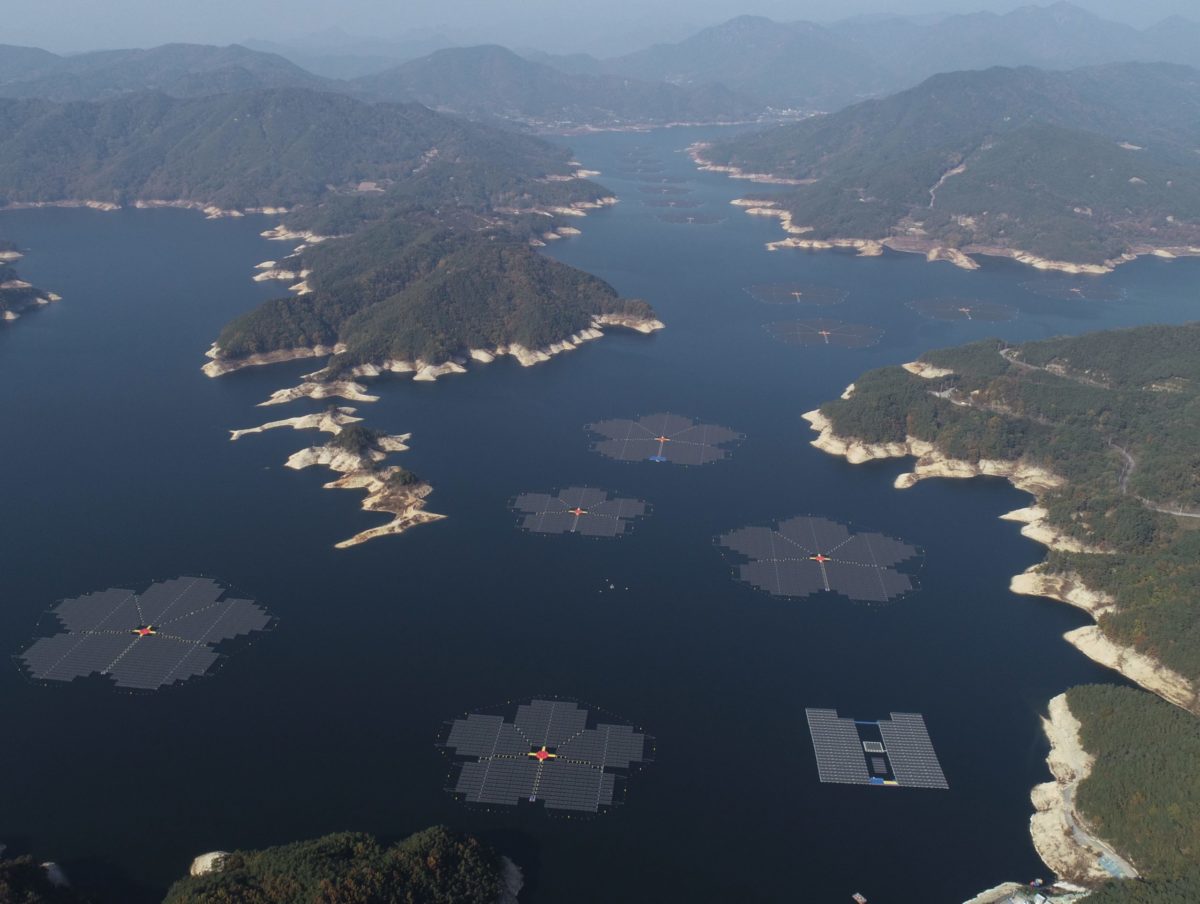Norwegian classification society DNV is aiming to develop the world’s first recommended practice on the design, development, and operation of floating solar photovoltaic (FPV) systems.
The independent energy expert and assurance provider estimates that the potential global capacity for deploying FPV power is currently around 4 TW and expects installed capacity to reach 10 GW worldwide by 2025.
The group points out, however, that standards applicable to FPV are still largely lacking, which could result in project delays and obstacles in permitting and authorization of utility-scale projects.
“FPV players are at best relying on inconsistent and diverse procedures and adjacent codes adopted from other sectors, which may hinder the industry’s capacity to rapidly scale up,” DNV notes.
In an effort to provide comprehensive guidance to FPV operators, DNV has taken the lead on two new joint industry projects (JIPs) to achieve FPV-specific reference standards. DNV previously spearheaded a JIP involving 24 of the sector’s leaders to develop the world’s first recommended practice (RP) on the design, development, and operation of FPV systems — DNV-RP-0584 — which was introduced in 2021 as the first step towards FPV standards and certification. FPV-specific reference standards will further enable companies to manage risks and facilitate the shift to renewables, according to DNV.
The first new JIP is to share and improve the best practices for the design of FPV-specific anchoring and mooring structures. Based on a selection of floating solar concepts, the project will address a variety of anticipated challenges when deploying installations in larger islands with shallow drafts. The second JIP would draw from DNV’s expertise and network to create “an adequate unified FPV-specific floats design, testing and qualification standard that will introduce clearer, faster and cheaper performance-based procedures that are layout-neutral and failure-mode-specific.”
Many water bodies remain largely available for power generation – making the business case for FPV extremely attractive. After a slow start, the FPV market grew to 2 GW of globally installed capacity in 2020. DNV foresees a total of 7 to 11 GW to be installed by 2025 with a major increase from 2023 onwards.
“The use of industry standards will ultimately lead to higher quality, lower failure rates and more adequate access to data-driven digital solutions and assurance services like verification and certification,” said Juan Carlos Arévalo, executive vice president at GPM&S, a DNV company. “This can only be achieved through joint efforts and continuous knowledge sharing. This will not lead to the convergence of floating solar photovoltaic technology into a dominant concept, but rather establish a common approach to analysis and simulation that allows players to consistently improve on one another’s best practices and lay out industry-wide testing and quality assurance procedures.”
Dana Olson, global segment lead for solar power, Energy Systems at DNV, added, “FPV structures present unique challenges to the solar industry due to specific hydrodynamic loads, risks of corrosion and specific components, such as floats, anchors and mooring lines.
“Several large customers in the solar community have requested that we develop new, tailored standards to guide them in the development of resilient FPV projects,” Olson added. “In particular, our input on the determination of design environmental loading will provide crucial guidance to the whole field, and we’re eager to engage directly with customers across the industry at this crucial step of FPV project development.”
This content is protected by copyright and may not be reused. If you want to cooperate with us and would like to reuse some of our content, please contact: editors@pv-magazine.com.








I dont know why I stillhave this nagging feeling that the narrative on solar energy seems to be still lost as far as future copper supplies are concerned.. I wonder how much more copper we will need to carry out our ambitions to achieve the climate change goals.. As you may already know that we are currently consuming between 20 to 25 million tons of copper globally annually that goes to everything we manufacture with. Some says that we will probably need only 5 million tons more annually to satisfy the expected growth in renewable energy related consumption in copper . Is this a fair number or do we really need far more ? Lets assume that we need to halve our fossil fuel consumptioin on a daily basis globally, then what ? I seem to notice that there is so much back and forth with renewable energy on an ongoing basis as if we are pausing while waiting for enough copper supplies to come along before resuming over and over without explaining the real reason behind this that is simply copper availability.. If so, then do we have the time to achieve our climate change goals without deciding to move more aggressively on additional copper supplies.
Interesting thought, but as far as I know, copper is one of the least scarce metals. Some industries that in the past used huge quantities ( eg, telecom industry) use only a tiny fraction of their previous consumption.
Factoid, there are thousands ( millions?) of tons of “dead” copper cable under the streets of all major cities. Voice, data, etc are much more effectly conducted over fibre optic. If there was ever possibility to get around the rats nest bureaucracy and poor record keeping of all buried utilities (that are under the streets and sidewalks), there would be enough good already refined copper to supply the world for a decade or 2.